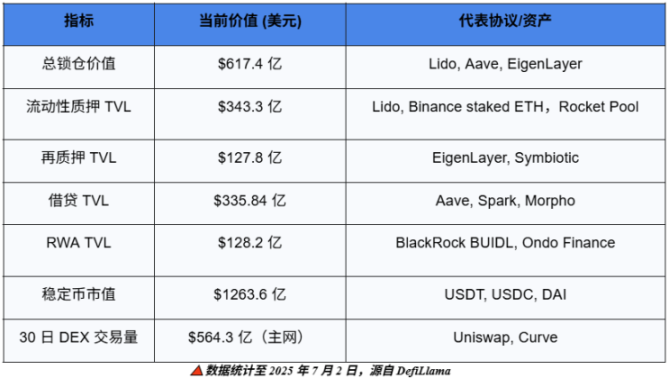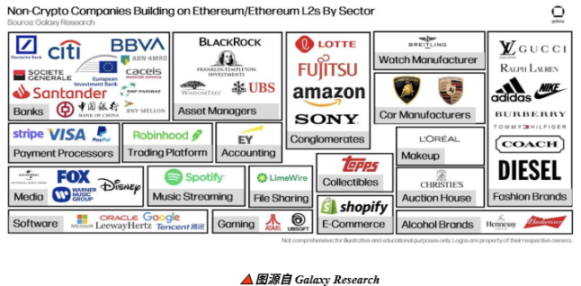From account abstraction and interoperability to Rollup consortiums, a unified, open, permissionless value internet is rapidly taking shape.
Written by: imToken
You may have heard these statements:
Solana is about to overtake Ethereum
Ethereum's transaction fees are high, and the ecosystem is declining
Ethereum upgrades are too slow, lacking narrative, and can't support the coin price…
But is that really the case?
If you are an OG who entered the space in 2017, you might remember the crypto experience back then: fast transactions, low fees, simple operations, and no need to switch chains for wallets—everything was straightforward.
Today, Ethereum is returning to a "simple yet powerful" user experience—perhaps even going further. Just as in the era of Qin Shi Huang when "vehicles shared the same tracks and scripts were uniform," Ethereum is reshaping its underlying structure with a modular strategy: the mainnet focuses on security and settlement, while Layer 2 handles performance and experience.
Can you imagine:
Smart contract wallets becoming increasingly popular?
Transaction fees on Ethereum being less than 1 cent?
Enjoying a Web2-like smooth application experience on-chain?
These are all happening. Technologies like Rollup, EIP-4844, and account abstraction are building a smooth, flexible, secure, and unified Ethereum.
The Foundation of Trust: The Unshakeable Ethereum Mainnet
We observe that, despite high-frequency trading flowing to Layer 2 and TRON's rising share of stablecoins, the Ethereum mainnet remains the core gathering place for capital, protocols, and developers.
1. Data as Evidence: Economic Dominance
On-chain data does not lie. Ethereum's total locked value is about $62 billion, far exceeding other blockchains; its stablecoin market cap exceeds $126 billion, making it the largest stablecoin issuance and circulation network globally; its ecosystem is a major contributor to decentralized exchanges (DEX) with monthly trading volumes in the hundreds of billions.

2. Strategic Shift: Moving Towards a Trillion-Dollar Security Base
Currently, Ethereum's vision as the "world computer" has unearthed the pioneering scenario of the "world ledger"—focusing on becoming the most neutral and secure settlement layer for global finance and digital assets. The foundation's proposed "trillion-dollar security" plan aims to create a solid base capable of supporting the entire UK stock market's asset volume, paving the way for "World Onchain."
3. Institutional Entry: Traditional Finance is Building the Future on Ethereum
From JPMorgan's JPM Coin to Franklin Templeton's on-chain fund, and BlackRock's BUIDL, Wall Street is building the future on Ethereum. The implementation of regulatory frameworks like MiCA (Markets in Crypto-Assets Regulation) has also cleared obstacles for the large-scale entry of compliant funds.

The Engine of Growth: Layer 2's Full Explosion
Ethereum's scalability has shifted from concept to reality, and a new division of labor is forming in the blockchain world:
1. Costs Plummeting, Transaction Volumes Surpassing the Mainnet
Today, the total daily transaction volume of mainstream Layer 2s like Base, Arbitrum, and OP has far surpassed that of the mainnet, primarily due to costs dropping by 10 to 100 times. This has made "free transactions" a possibility rather than just a commercial vision. With brokerages like Robinhood entering the tokenized stock space, Layer 2 will see a wave of higher frequency and more diverse trading.

2. Dencun Upgrade: Opening Exclusive Highways for Layer 2
The Dencun upgrade introduces "Blob"—a temporary data space designed specifically for Layer 2. It operates independently of the mainnet's expensive permanent storage, reducing the data publishing costs for Layer 2 by 100-200 times, which is a key part of the scalability revolution. Subsequent technologies like PeerDAS and ePBS will further expand this data highway.
The Revolution of Experience: Account Abstraction, the Last Mile to the Mass Market
If Layer 2 solves the "expensive" problem, then account abstraction aims to tackle the "difficult to use" issue. This is the final hurdle for Web3 to welcome the next billion users.
The goal of account abstraction is to turn your wallet into a programmable "smart account," providing a disruptive experience:
1. Completely Say Goodbye to Gas Fee Worries
In the future, when using DApps, you won't need to worry about gas fees or buying ETH. Through the Paymaster mechanism, DApps can pay gas fees on your behalf, or you can directly pay with stablecoins like USDT. Transactions will feel as natural as breathing.
2. End the Anxiety of Mnemonic Phrases
Forget that nerve-wracking string of mnemonic phrases! Through social recovery (verified by friends and family) or email recovery (using zk-Email technology), recovering your account will become simple and secure.
3. Web2-Level Smooth Login and Payment
Say goodbye to the hassle of needing to sign every operation!
Passkey: Authorize transactions directly using facial recognition or fingerprints, making complex concepts like private keys and signatures completely invisible.
Session Keys: When playing blockchain games or performing high-frequency operations, a single authorization allows you to play freely within a specified time without being interrupted by frequent signatures.
A Unified Landscape: When "On-Chain Islands" Connect to Form a Continent
Having solved the issues of "expensive" and "difficult," the final challenge for the Ethereum ecosystem is fragmentation. Assets and identities are trapped on different Layer 2 islands, and cross-chain experiences remain complex and slow.
Interoperability technology is the key puzzle piece connecting these islands and building a unified continent.
- Intents: From "How to Do" to "What to Do"
In the future, you won't need to worry about cumbersome cross-chain steps. Just express your ultimate goal, such as "I want to swap 100 USDC on Arbitrum for as much ETH as possible on Base." Professional "solvers" in the system will automatically calculate and execute the optimal path for you, with the entire process happening in the background, completely seamless to you.
- Shared Sequencers: Making Cross-Chain Operations Atomic
This ensures that a complex cross-chain transaction (like cross-chain arbitrage or lending) either succeeds entirely or fails entirely, completely eliminating the risk of asset loss during cross-chain processes, providing a solid foundation for complex cross-chain applications.
- Cross-Chain Session Keys: The Ultimate Combination of Account Abstraction and Interoperability
With a single authorization, DApps can automatically execute tasks for you across multiple chains. Imagine being able to automatically stake your idle assets across multiple Layer 2s into the highest-yielding protocols with just one click.
The ultimate experience of the future will be: In your Web3 wallet, you initiate an "intent" with a single fingerprint verification. Then, the Paymaster pays the gas for you, the Solver plans the path, and the shared sequencer ensures security, allowing assets to flow seamlessly between multiple Layer 2s, ultimately settling on the Ethereum mainnet.
The front end will be as smooth as Web2, while the back end will be a highly coordinated modular network. This is "Unified Ethereum."
Welcome to "Unified Ethereum"
Unified Ethereum is no longer a future concept; it is already at our feet. The mainnet ensures trust, Layer 2 provides performance, account abstraction opens the gateway, and interoperability technology seamlessly connects it all.
In this new paradigm, Web3 wallets will play a role that is more than just wallets; they will be intelligent gateways into a unified ecosystem, personal assistants for managing programmable accounts, and reliable guides for obtaining the best experience in a multi-chain world.
We are standing at the starting point of a brand new value internet—it is unified, open, user-friendly, and unprecedented.
免责声明:本文章仅代表作者个人观点,不代表本平台的立场和观点。本文章仅供信息分享,不构成对任何人的任何投资建议。用户与作者之间的任何争议,与本平台无关。如网页中刊载的文章或图片涉及侵权,请提供相关的权利证明和身份证明发送邮件到support@aicoin.com,本平台相关工作人员将会进行核查。




